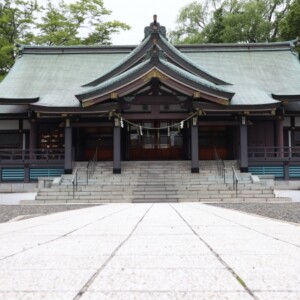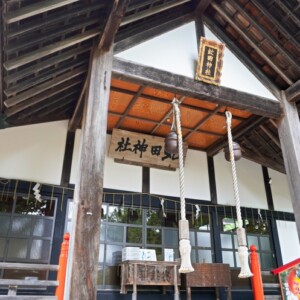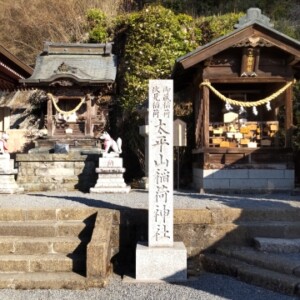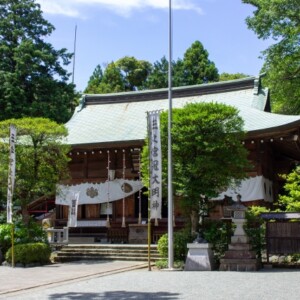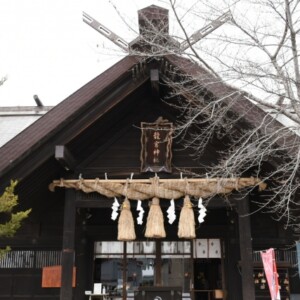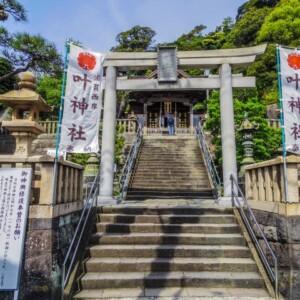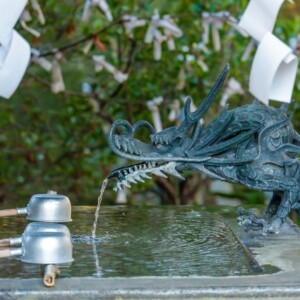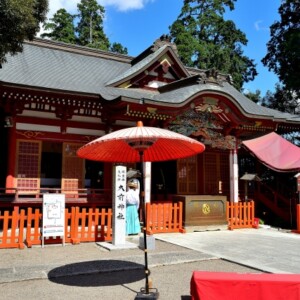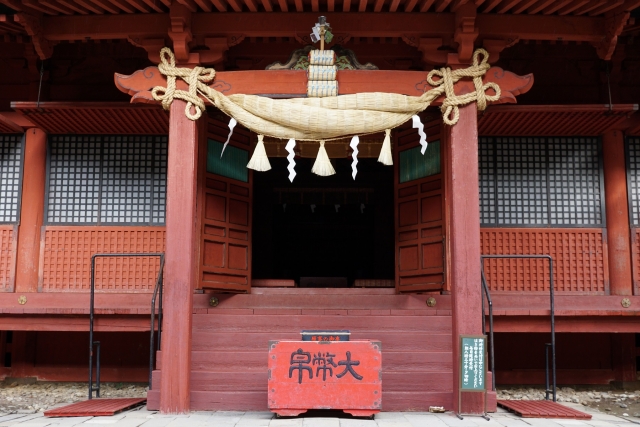
Iwakisan-jinja Shrine|Complete guide to the history, highlights, and worship information of this historic shrine in Tsugaru
Iwakisan Shrine, located at the foot of beautiful Mt. Iwaki, called Tsugaru Fuji, is the oldest shrine in the Tsugaru region, boasting a history of approximately 1,200 years. The shrine, affectionately known as “Iwaki-sama” by the local people, has a unique charm that is a combination of the gorgeous and gorgeous shrine pavilions and the belief in the sacred mountain.
Outline and basic information about Iwakisan Shrine
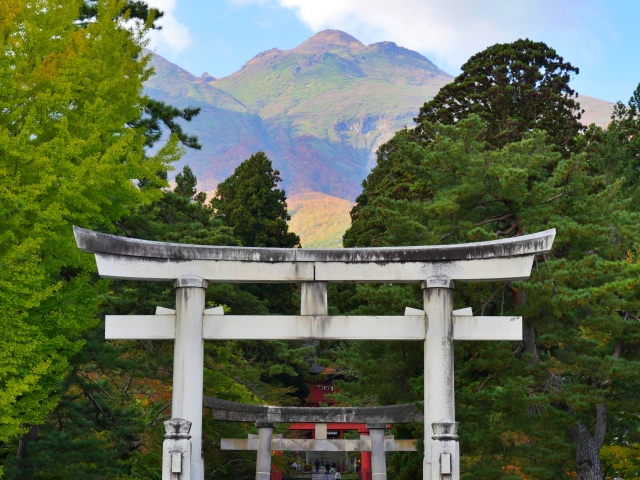
Iwakisan Shrine is located in Terasawa, Momosawa-aza, Hirosaki-shi, Aomori Prefecture, and has long been revered as the first shrine in Tsugaru Province. The shrine buildings, built under the patronage of the feudal lord Tsugaru, have been called “the Nikko of the back” for their beauty. Even today, it is one of the representative shrines of Aomori Prefecture, visited by many worshippers as a guardian deity of agriculture, fishery, commerce, and industry, as well as a god of good fortune.
History and Origin
Iwakisan-Ookami, the Great God of Mt. Iwaki, has resided at the sacred mountain Iwaki-Mine since time immemorial. The history of Iwakisan Shrine began with mountain worship of Mt.
In the 19th year of Enryaku (800), the barbarian general Sakagami Tamuramaro rebuilt the shrine and built a separate Shimojimiya (lower palace) at the foot of the mountain in the village of Tokoshiuchi, calling the mountaintop the Okumiya (inner palace). In 1091, the Shimojimiya Shrine was moved to its present location by imperial decree.
During the Edo period (1603-1868), the shrine was constructed on a large scale due to the faith of the feudal lords of the Tsugaru domain. The tower gate, worship hall, and one set of four buildings of Iwakisan Shrine (main hall, inner hall, zuigaki, and central gate) were built and donated by successive Hirosaki domain lords from the early Edo period to the Genroku period, and are now designated as important cultural properties. In particular, the construction by Tsugaru domain lords Tamenobu, Nobumaki, Nobuyoshi, and Nobumasa completed the majestic group of shrine buildings that can be seen today.
During the Meiji era (1868-1912), the Shinto and Buddhism Separation Order abolished the temple portion of the shrine, and Iwakisan Shrine was established as the head shrine of Tsugaru. In 1873, Iwakisan Shrine was upgraded to the status of a small shrine under the national government’s mintage, a status that publicly recognized its prestigious status.
Deities and Benefits
Five deities are enshrined at Iwakisan Shrine, collectively called “Iwakisan Daijin. They are Utsushikunitama no Kami, Tatsuhime no Kami, Uganome no Kami, Oyamazumi no Kami, and Sakanoue no Karitamaro no Mikoto.
Akokunitama-no-kami is another name for Okonoki-no-mikoto, the god of marriage, also known as the main deity of Izumo-taisha Shrine. Tatsuhime is one of the Three Goddesses of Munakata and is worshipped as a goddess of wealth. Ugano-Ugokuri-no-Kami is widely known as the god of rice harvest, Oyamazumino-no-Kami is worshipped as the god of mountains, and Sakagami Karitamaro-mikoto is the deified version of the barbarian general Sakagami Tamuramaro.
These deities are believed to bring a wide range of benefits to Iwakisan Shrine, including good luck, marriage, prosperous business, a good harvest, and safety in the home. The shrine is deeply revered as a source of deep faith in agriculture, fishery, commerce, medicine, and transportation, and especially as a god of luck and fortune, transcending various religious sects.
Iwakisan Shrine Highlights
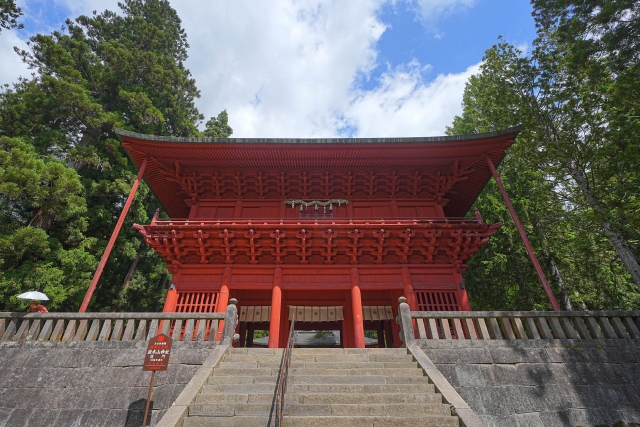
The most distinctive feature of Iwakisan Shrine is the structure of the shrine grounds, which are arranged in a straight line from the Ichino Torii (first torii gate) to the Okumiya Shrine at the top of Mt. This arrangement is believed to allow worshippers to directly receive the power of Mt. The shrine’s precincts, where the splendor of the shrine buildings and the beauty of nature are in harmony, leave a deep impression on visitors.
Architectural and Structural Attractions
Iwakisan Shrine’s pavilions are called “Oku no Nikko” (the Nikko of the interior) because of their splendor and splendor. The shrine pavilions retain vestiges of the Shinto/Buddhist syncretism, and while the structure is reminiscent of esoteric Buddhist temples built after the Kamakura period (1185-1333), the colorful carvings and picturesque designs are reminiscent of the Momoyama period (1573-1600).
The main shrine is especially beautiful. It was built in 1694 by Nobumasa, the fourth lord of the feudal domain, and has a sangensha nagare-zukuri copper-tile roof. The entire surface is painted in black lacquer, with gold leaf stamped throughout, and all the carvings are decorated in rich colors, and decorative metal fittings are used extensively. The roof has eaves gables and chidori-gables on the front, and the front eaves columns are decorated with ascending and descending dragons.
The gate was built in 1628 by Nobuhira, the second lord of the Tsugaru domain. The gate, seen from the bottom of the stone steps on the approach to the temple, has an overwhelming presence that leaves a deep impression on visitors.
The temple grounds are also home to distinctive guardian dogs. The two guardian dogs facing upward are believed to bring good luck for money, while the one facing downward is believed to bring good luck for love. The guardians were built in 1694 and have a history of more than 300 years, making it a popular power spot.
Natural and scenic beauty
Iwakisan Shrine has more to offer than just its architecture. The long approach from the torii gate overlooking Mt. Iwaki to the main shrine is surrounded by a grove of cedar trees. The approach has a different appearance each season, with fresh greenery in spring, beautiful autumn leaves in fall, and snow in winter, creating a solemn atmosphere.
The precincts of the shrine are home to a water purification structure in the shape of a three-necked dragon, and the water that gushes from the mouth of this dragon god is spring water from Mount Iwaki. The water from the mouth of the Dragon God is spring water from Mount Iwaki. You can drink it as well as cleanse your hands, so please take in the power of the water. The water is said to be beneficial for children and attracts many worshippers.
After passing through the white torii (second torii) gate, look to the right. There you will see a large sacred tree called “Gobonsugi” (five cedars). It is said to represent the five gods enshrined at the Iwakisan Shrine.
Important Cultural Property and Prefectural Important Cultural Property
Numerous cultural assets are preserved at Iwakisan Shrine. The six buildings designated as National Important Cultural Properties are the main hall, Okumon gate, Zuigaki gate, hall of worship, Naka-mon gate, and Toromon gate. All of these buildings were constructed by the lords of the Tsugaru domain from the early Edo period to the Genroku period (1688-1704), and are highly regarded as a group of structures that represent the best of the technology of the time.
The buildings designated as important cultural properties by the prefecture include a tsuritonro (a traditional Japanese lantern), a Japanese sword, a wooden bugaku mask, and the shrine office. The tsuriton in particular is a hexagonal tsuritonryu, a copper plate gilded with gold and engraved with a floral pattern in openwork. The six pillars, called “ryo” (ridge), are inscribed with an inscription that says Mikami Morisuke was the owner, and that Saishoin and Kounin priests of Oura-go, Hanahe-gun made a wish and dedicated it in August 1517, making it a valuable artifact more than 500 years old.
The shrine office was built in 1845 (Koka 2) with an irimoya (gabled roof) and thatched roof, and was constructed in anticipation of visits by feudal lords. The prestigious structure, centering on the Goza-no-Ma, testifies to the high level of architectural technology of the time.
Guide to Prayer
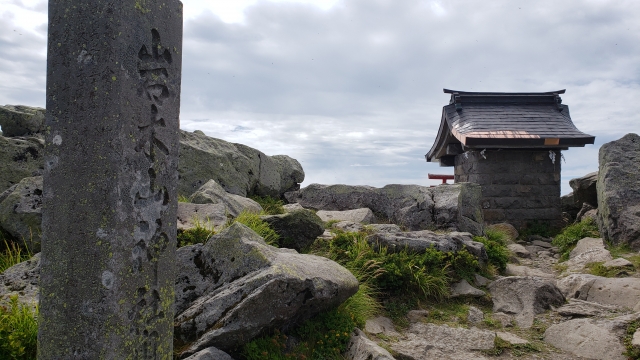
Worship at Iwakisan Shrine is deeply connected with the belief in the sacred mountain Mt. The shrine has a unique atmosphere that differs from that of a typical shrine visit, so it is important to worship here with respect for the power of nature and the gods. Visitors are encouraged to walk on the right side of the shrine grounds, and may visit the shrine after purifying themselves at the hand-watering basin.
Worship Etiquette and Manners
The basic method of worship at Iwakisan Shrine is the same as at many other shrines: “Ni-hai Ni-hate Ichi-hai. When passing through the Ichino-torii (first shrine gate), bow first, and walk down the approach to the shrine avoiding the center of the path. Since Iwakisan Shrine encourages visitors to walk on the right side of the path, it is best to purify your hands and mouth at the hand- and mouth-cleansing booth on your right before visiting the shrine.
At the hand-watering basin, purify yourself with the spring water from the three-headed Dragon Goddess. This water is a blessing from Mt. Iwaki and is believed to be beneficial for children. Not only can you purify your hands, but you can also drink it and take the power of the gods into your body.
In front of the shrine, visitors pay money offering and then worship in the manner of two beats and one bow. Iwakisan Shrine is believed to bring various benefits such as good luck, marriage, prosperous business, a good harvest, and family safety, so pray with all your heart.
When visiting the shrine, pay attention to the komainu (guardian dogs). The upward-facing guardian dogs are believed to bring good luck for money, while the downward-facing ones are believed to bring good luck for love.
Oyama Pilgrimage (Important Intangible Folk Cultural Asset)
The most important festival of Iwakisan Shrine is the “Oyama Pilgrimage. This event, held mainly on August 1 of the lunar calendar, is designated as an Important Intangible Folk Cultural Asset by the national government and is the largest autumn festival in the Tsugaru region.
The “Oyama Pilgrimage” is a traditional event in which each village worships at the top of the mountain in a group to give thanks and pray for a bountiful harvest. Prior to the visit to the shrine of the local deity of each village, the participants spend a week at the shrine to purify themselves, put on new white clothes, and carry a colorful staff according to the number of times they have visited the shrine.
The participants then proceed to the Mt. Iwaki shrine amidst the sounds of a climbing band, chanting “Saigi, Saigi” (meaning “Saigi, Saigi” in Japanese). After purifying themselves again at Misogi-jyo in the shrine area and undergoing purification before the gods, the participants head cheerfully up the mountain toward the Okumiya Shrine to worship the morning sun at midnight.
Nowadays, a skyline has been opened for worship, allowing many worshippers to participate in this traditional Tsugaru religious event. During the pilgrimage, many events are held at the Iwakisan Shrine at the foot of the mountain, and food stalls are lined up to create a lively scene.
Red Seal and Good Luck Charm Information
Iwakisan Shrine offers beautiful red seals. Red seals are available at the awarding office on the left side of the shrine grounds, and are popular among shrine visitors. It is recommended to bring your own red seal book, but original red seal books for Iwakisan Shrine are also available for purchase.
Various types of good luck charms are available, including those for family safety, business prosperity, match-making, and health. In particular, good luck charms for match-making and prosperous business are popular with many visitors. In addition, amulets for good luck and good fortune are especially recommended as they represent the typical benefits of Iwakisan Shrine.
Iwakisan Ojin no Omote (Iwaki-yama Shrine God’s talisman) is also distributed as Iwaki-yama Shrine God’s talisman. Iwaki is called “Oiwaki-sama,” or Mt. Iwaki, a sacred mountain believed to be the mountain where ancestral spirits reside, and has been worshipped by the people of Tsugaru. Please check the official website for more details about these gifts.
Access/Use Information
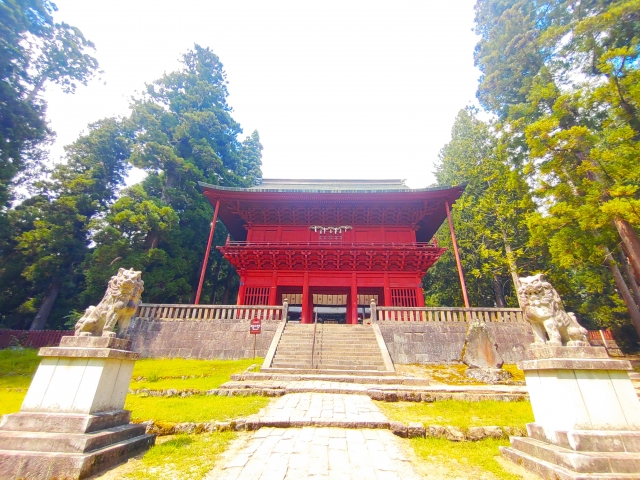
Iwakisan Shrine is located approximately 30 minutes by car from the center of Hirosaki City, Aomori Prefecture. Although the shrine can be accessed by public transportation, access by car is more convenient due to its location in a rich natural environment. Parking is available in the vicinity of the shrine, and visitors can worship throughout the four seasons.
Access by Public Transportation
The closest station to the shrine is Hirosaki Station on the JR Ou Main Line, accessible by train and bus. From bus stop No. 6 in front of Hirosaki Station, take the “Iwaki Town Hall Line/Iwakisan Line (via Takaoka)” of the Konan Bus and get off at the “Iwakisan Jinja-mae” stop. The bus ride takes about 40 minutes, and the shrine is about a 3-minute walk from the bus stop.
Access by car is approximately 50 minutes from the Owani Hirosaki IC on the Tohoku Expressway, 1 hour and 10 minutes from Aomori Airport, and 1 hour and 20 minutes from Shin-Aomori Station on the Tohoku Shinkansen Line. It takes about 30 minutes from the center of Hirosaki City.
The route to Iwakisan Shrine is relatively easy to follow, and you can follow the road signs to Iwakisan. The area surrounding the shrine is rich in nature, and visitors can enjoy a drive while visiting the shrine.
The shrine is also easily accessible to other sightseeing spots in Aomori Prefecture, and can be visited in tandem with Hirosaki Castle, Lake Towada, and Shirakami Sanchi (Mt. Shirakami). It is easy to visit in between sightseeing tours, making it one of the most important spots for sightseeing in Aomori Prefecture.
Hours of worship, fees, and parking information
The hours of worship at Iwakisan Shrine vary according to the season: from April to October, the hours are from 8:00 am to 5:00 pm, and from November to March, the hours are from 8:30 am to 4:00 pm. However, please check the official website and social networking sites for the latest information on the opening hours of the awarding ceremony, as they are subject to change.
There is no fee to visit the shrine. There is no charge to enter the temple grounds, but there is a separate fee for red seals, amulets, and other awards.
Free parking is available in front of the shrine. The parking lot can accommodate a sufficient number of standard-sized cars, but it is recommended to use public transportation as it gets crowded on festival days. Especially during the period of Oyama Pilgrimage, it is very crowded, so please try to arrive early.
The temple is also crowded with many worshippers during Hatsumode (New Year’s visit). We recommend that you arrive early to allow plenty of time to visit the temple and to be well-protected against the cold.
<Address> 27 Terasawa, Momosawa, Hirosaki-shi, Aomori, 036-1343 Japan
Reference site
Iwakisan-jinja Shrine Official Website: https://iwakiyamajinja.or.jp/



